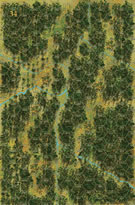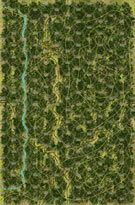|
Ioribaiwa, Day Two Kokoda Trail #19 |
||
|---|---|---|
| (Defender) Australia | vs | Japan (Attacker) |
| Formations Involved | ||
|---|---|---|
| Australia |  |
21st Infantry Brigade |
| Australia |  |
25th Infantry Brigade |
| Japan |  |
144th Infantry Regiment |
| Japan |  |
41st Infantry Regiment |

|
| Overall Rating, 1 vote |
|---|
|
3
|
| Scenario Rank: --- of 957 |
| Parent Game | Kokoda Trail |
|---|---|
| Historicity | Historical |
| Date | 1942-09-14 |
| Start Time | 08:00 |
| Turn Count | 24 |
| Visibility | Day |
| Counters | 131 |
| Net Morale | 1 |
| Net Initiative | 0 |
| Maps | 2: 34, 35 |
| Layout Dimensions | 56 x 43 cm 22 x 17 in |
| Play Bounty | 158 |
| AAR Bounty | 166 |
| Total Plays | 1 |
| Total AARs | 1 |
| Battle Types |
|---|
| Hill Control |
| Road Control |
| Rural Assault |
| Conditions |
|---|
| Terrain Mods |
| Scenario Requirements & Playability | |
|---|---|
| Afrika Korps | Counters |
| Guadalcanal | Counters |
| Kokoda Trail | Base Game |
| Introduction |
|---|
|
Promptly at 0800 on the 14th of September the Australian 25th Brigade launched its flanking attack down off Ioribaiwa Ridge. The 2/31st was on the left flank and the 2/33rd on the right flank. The composite 2/14th and 2/16th in the center was ordered slowly retreat back up onto the ridge and draw the advancing Japanese into the trap. The Japanese had plans of their own however, and launched a broad frontal attack at the same time using all their remaining troops. |
| Conclusion |
|---|
|
Before even reaching the bottom of the ridge, the 2/31st and 2/33rd encountered strong Japanese forces attacking toward them. The battle quickly changed into a desperate defense of the ridgeline by the Australians. At close of day the Australians were still holding a line across the face of the ridge but the battle was undecided. |
| Open the floodgates! | ||||||||||||||
|---|---|---|---|---|---|---|---|---|---|---|---|---|---|---|
Finally the last battle of the Kokoda campaign! For Veteran’s Day, my opponent and I, both veterans, decided to play the mother of all scenarios in this set, Scenario 19, Ioribaiwa, Day 2. Compared to many other sets Kokoda’s biggest battle isn’t that large, two maps, 24 turns, and 131 counters. But the point swing in a campaign is huge, outweighing many of the other battles combined. In this scenario, the Japanese are conducting a broad offensive attempting to reach the ridgeline on the southern board, while the Australians were intending to try and draw them into a trap. Each side gets one point for each step loss inflicted. The Japanese get one point for each undemoralized step that reaches the 40m mark on the southern board, and two points for each undemoralized step at 60m or higher, or on the trail on the southern board. The Australians get one point for every Japanese step that is demoralized or not 40m or higher or on the trail. The Japanese have significant support forces, five mortars and one 70mm gun, that all have limited ammo. Whenever one fires, a follow-on roll of ‘1’ removes that unit, but it does not count for victory purposes. The Australians set up their strong southern board units along the 40m ridgelines, and set up their weak northern board forces in four stacks near the stream (one in the only village) to try and slow the Japanese. The Japanese start strong on the right and center, and place a significant but weaker force on their left. The gun is adjacent to the stream supporting HMGs, and the mortars are back a couple of hexes. Things begin horribly for the Japanese. There are no step losses at all in the first three turns mostly because there isn’t time. In the first seven turns, six are ended by fog of war before half the Japanese force activates, four on the first roll for the turn. This leaves the Japanese barely across the start line on the right and center, and nothing has happened on the left. To make matters worse, one mortar runs out of ammo on turn one, another mortar and the gun on turn two, and two more mortars on turn 4. During those seven turns the Australians suffered seven step losses to two for the Japanese, but the offensive has largely stalled. A good penetration in the center has left the Japanese close to the Australian line, but both flanks are a mess. They have bypassed an Australian outpost on the stream, and assaulted the village for little gain. The only bright spot on the Japanese side is engaging an assault on the defenders of the trail hex entering the southern board, as well as moving into an adjacent hole in the Aussie line when the Australians attempt to reinforce the trail hex. On turn eight the tide turns. The Japanese blow the trail open, and Japanese troops pour through the trail and the adjacent hole at an incredible rate. The Australians are cut in two, the Japanese are starting to climb the hill behind them, and the trail defenders take a beating. The Japanese also play a dirty trick by pinning the extreme left of the Aussie line with a weak assault (hex 0304), allowing the massive Japanese force behind to pivot around the flank. A single platoon also moves into the middle of four Australians stacks (hex 0205), and the Australians try to pulverize it with direct fire for four turns, finally giving up without having created any significant impact. The Australian center is broken, the left flank has been run, and Japanese troops are all over the Aussie rear. Only the Aussie right is holding, using 25% of the Australian force to hold 13% of the Japanese force from the southern board. More Japanese pour forward or around the flank, and the scenario has become grim for the Australians. Finally, a note of hope on turn 12 as Aussie opfire wipes out a platoon of engineers running down the trail. But on that same turn an attempt to slow down the Japanese flank run goes bad, as Japanese opfire wipes out an Aussie infantry platoon. Another Japanese opfire on turn 13 inflicts a step against an Australian HMG moving on the hill. At this point the flood of Japanese to the top of the hill has left the Australians hopeless. The Australian commander offers terms. In the end, we determine 52 Japanese steps achieve the two point zone, another eight the one point zone, plus 13 Australian steps eliminated, for a Japanese score of 125. The Australians inflict four step losses, tie down 12 steps on the Australian right, and pin another 14 steps in ongoing assault hexes on the northern board for a total score of 30. Another Japanese major victory! We rated this scenario a 3. We actually really liked it. The victory conditions were intelligent, forced realistic behavior, and provided that mathematical thought pattern of what could you afford to give away to the enemy and still make up somewhere else. Very pleasing. The shortcoming was once the Japanese made the hill in numbers there was little for the Australians to do to try and recover. Launching assaults up the hill into the jungle would more likely cause more Australian casualties than Japanese point losses. The Australian player relied on direct and opportunity fire, which was an error. Since we play the banzai rule for Japanese, the best way to stop them would have been to line up on the 40m line (which he did) and assault the Japanese when they were adjacent to hold them in place. If the Australians survive the first fire, the onus goes on the Japanese to fight their way out. The northern board forces should have been set up farther back to give the trail a defense in depth. Perhaps replaying this could earn it a 4, as I suspect the results would be much closer. In our game, though, even with six very early fog turns the Japanese lead became insurmountable by turn 14, leaving ten more turns for straggler action. Breaking the Australian line just made for a mess that the Australians could never recover. The early and mid-game are great, but the endgame was lacking. Final Campaign score: Japanese 603, Australians 139. Crushing victory for the Japanese! Next, it’s on to Australia itself!! Despite some less than stellar scenarios in this book, I and my opponent had a great time playing through the campaign, and I through the remaining scenarios solo. I suspect the new version will clean up some of the shortcomings and should be a great product. Even though speed in the jungles is slow, command is critical and there is still plenty of opportunity to have scenarios driven by maneuver. The trails and streams are natural highways, and accounting for that can be a challenge to both defender and attacker. The speed of the trail is tempting, but a good defense leaves the attacker seeking the path through the jungle, which isn’t always as good an idea as it may seem. A good selection of battles. Just realize this is infantry warfare, not armored. It makes you feel for what the poor troops from both sides went through on this narrow slugfest over a mountain range where every supply had to be carried up and over. |
||||||||||||||
| 0 Comments |

 KoTr018
KoTr018 


















